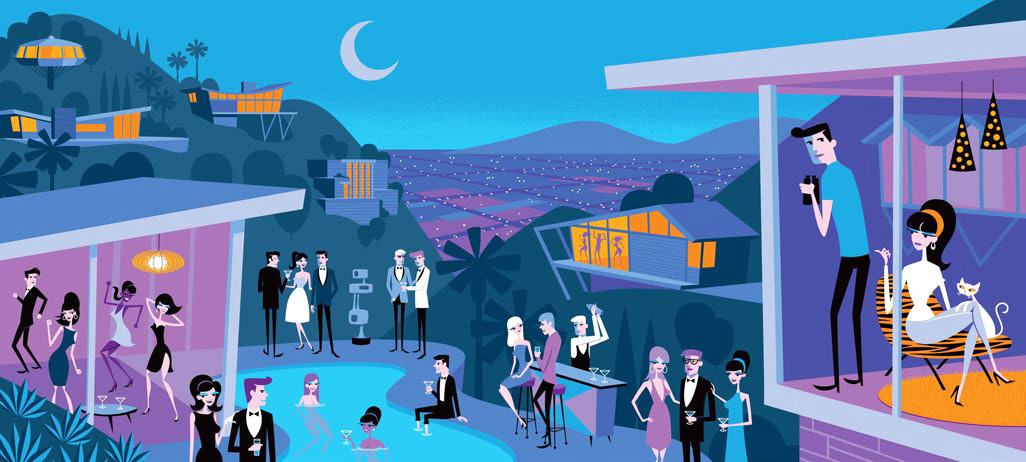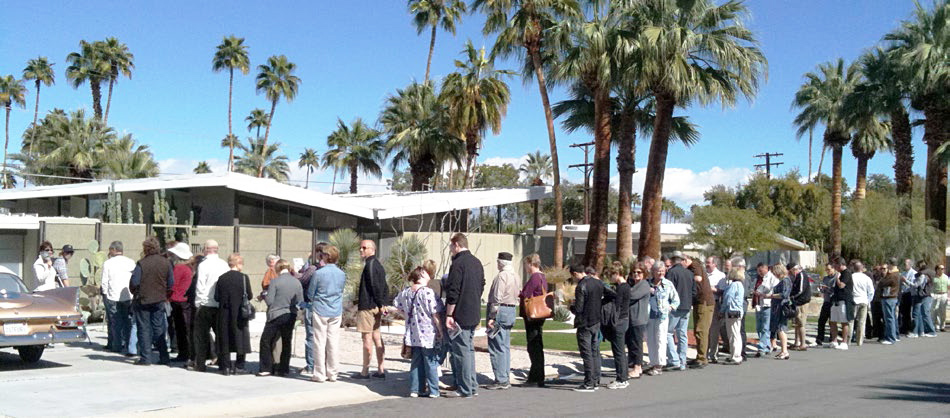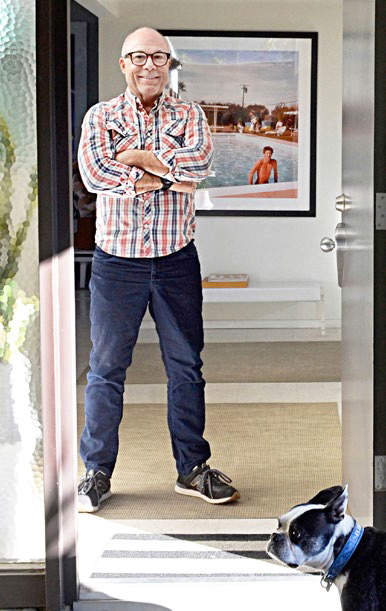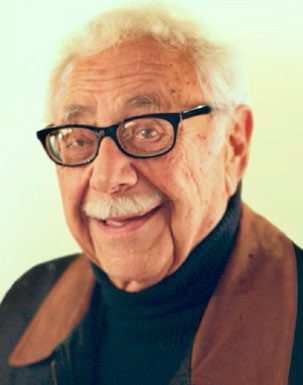Roaring Back - Page 2
 |
|
|
 |
|
|
 |
|
|
 |
|
|
Why modern fell from favor in tract homes remains a puzzle.
"I think the generation of people buying houses then remembered the house where they had grown up, and wanted that kind of house now that they were starting families," Krisel says, adding, "And some builders thought it was time to do something different."
"Styles change," Menrad hazards.
Alan Hess, an architect and author, says, "It's definitely a pattern. A style is invented, it's successful, it's popular. It goes into decline for a number of decades. It's demolished. And after a while, it's rediscovered.
"It usually takes a book, or someone really paying attention, then it catches fire."
And mid-century modern, as we call the style today, certainly has caught fire.
Palm Springs, which "had the connotation of being an old person's place" when Menrad bought there, he says, today is ground zero for modernism, with thousands of homes and motels restored throughout town and an annual Modernism Week that last year attracted more than 77,000 fans.
Mid-century modern neighborhoods throughout Northern California have seen an influx of eager young buyers since the mid-1990s.
While most neighborhoods built by Joe Eichler, some Streng neighborhoods in the Sacramento Valley, and a few mid-century modern neighborhoods in Southern California had always retained their looks, many others had not.
Even in Eichler neighborhoods, over the years, many homes were badly altered.
Today it's much more common for owners to restore mid-century homes than alter them. And this is happening even in modern neighborhoods in such places as the San Fernando Valley, where many owners had lost track of their homes' heritage.
In 1998 Arapahoe Acres near Denver became the first modern neighborhood added to the National Register of Historic Places. Two Eichler neighborhoods followed in 2005.
Why do people today love mid-century modern homes and accouterments more than they did at any time since the mid-century?
And, now that modernism has been rediscovered, will we ever stop loving the warmth of Eichler homes, the indoor-outdoor flow of space in modern homes, the sexy, comforting curves of an Eames chair?
The obvious answer to question one, that people simply saw the light, is partly true. "[Mid-century modern] was lost and re-found because what happened in between wasn't that great," Menrad says, arguing that American products and homes in the 1980s and 1990s were, in general, of little visual or design interest.
What also helped the revival was putting a name on the style. Writer Cara Greenberg essentially invented 'mid-century modern' as a term, and it quickly was adopted by others in ways she had not expected. Her 1984 book Mid-Century Modern: Furniture of the 1950s helped to kick off the mid-century revival.




